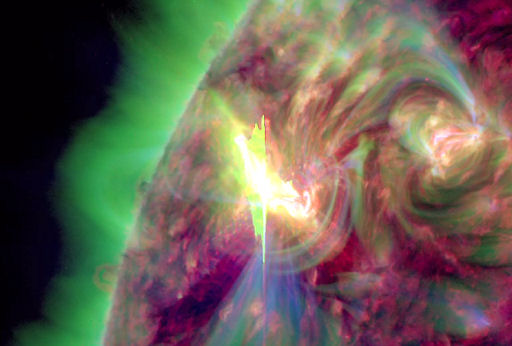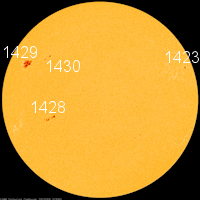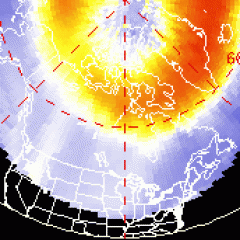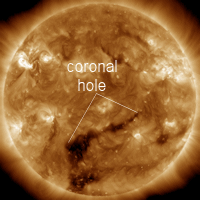~Space Weather Update~ Sun is Very Active~ X~ Class Flare [1]
CLOSE ENCOUNTER WITH MARS: Today, Mars is at its closest to Earth for 2012. The Red Planet is only 101 million km away and shines about six times brighter than a 1st magnitude star. Look for it in the eastern sky at sunset. The burnt-orange color of Mars is very distinctive, especially when seen from rural areas with clear skies. [sky map [2]] [images: #1 [3], #2 [4], #3 [5]]
STRONG SOLAR ACTIVITY: Solar activity is now high. Big sunspot AR1429, which emerged on March 2nd, is crackling with strong flares. This morning brought the strongest so far--an X1-class [6] eruption on March 5th at 0413 UT. NASA's Solar Dynamics Observatory recorded the extreme ultraviolet flash:
Update: The explosion also hurled a bright CME [8] into space. According to analysts at the Goddard Space Weather Lab, the CME will probably miss Earth, although it will hit Mercury and Venus. An animated forecast track [9] shows the likely progression of the cloud.
Even if this CME misses, high-latitude sky watchers should still be alert for auroras in the nights ahead. An M2-class eruption from the same sunspot on March 4th produced another, wider CME that might yet intersect Earth. The cloud is expected to deliver a glancing blow to our planet's magnetic field on March 6th at 04:30 UT (+/- 7 hr). Auroras alerts: text [10], phone [11].

![]()
Solar wind
speed: 367.9 km/sec
density: 3.5 protons/cm3
explanation [12] | more data [13]
Updated: Today at 1535 UT
![]()
X-ray Solar Flares
6-hr max: C5 1213 UT Mar05
24-hr: X1 0410 UT Mar05
explanation [14] | more data [15]
Updated: Today at: 1500 UT
![]()
![]()
![]()
Daily Sun: 05 Mar 12
![]()
![]()
Big sunspot 1429 poses a threat for X-class [6] solar flares. Credit: SDO/HMI
![]()
![]()
![]()
Sunspot number: 70
What is the sunspot number? [17]
Updated 04 Mar 2012
Spotless Days
Current Stretch: 0 days
2012 total: 0 days (0%)
2011 total: 2 days (<1%)
2010 total: 51 days (14%)
2009 total: 260 days (71%)
Since 2004: 821 days
Typical Solar Min: 486 days
Updated 04 Mar 2012
The Radio Sun
10.7 cm flux: 120 sfu
explanation [18] | more data [19]
Updated 04 Mar 2012
![]()
![]()
![]()
Current Auroral Oval:
![]()
Switch to: Europe, USA, New Zealand, Antarctica
Credit: NOAA/POES
![]()
![]()
![]()
Planetary K-index
Now: Kp= 1 quiet
24-hr max: Kp= 3 quiet
explanation [21] | more data [22]
![]()
Interplanetary Mag. Field
Btotal: 6.1 nT
Bz: 5.6 nT south
explanation [23] | more data [24]
Updated: Today at 1536 UT
![]()
![]()
![]()
Coronal Holes: 05 Mar 12
![]()
![]()
A solar wind stream flowing from this coronal hole could reach Earth on March 8-9. Credit: SDO/AIA. ![]()
Category:
- Ground Crew Updates [26]



